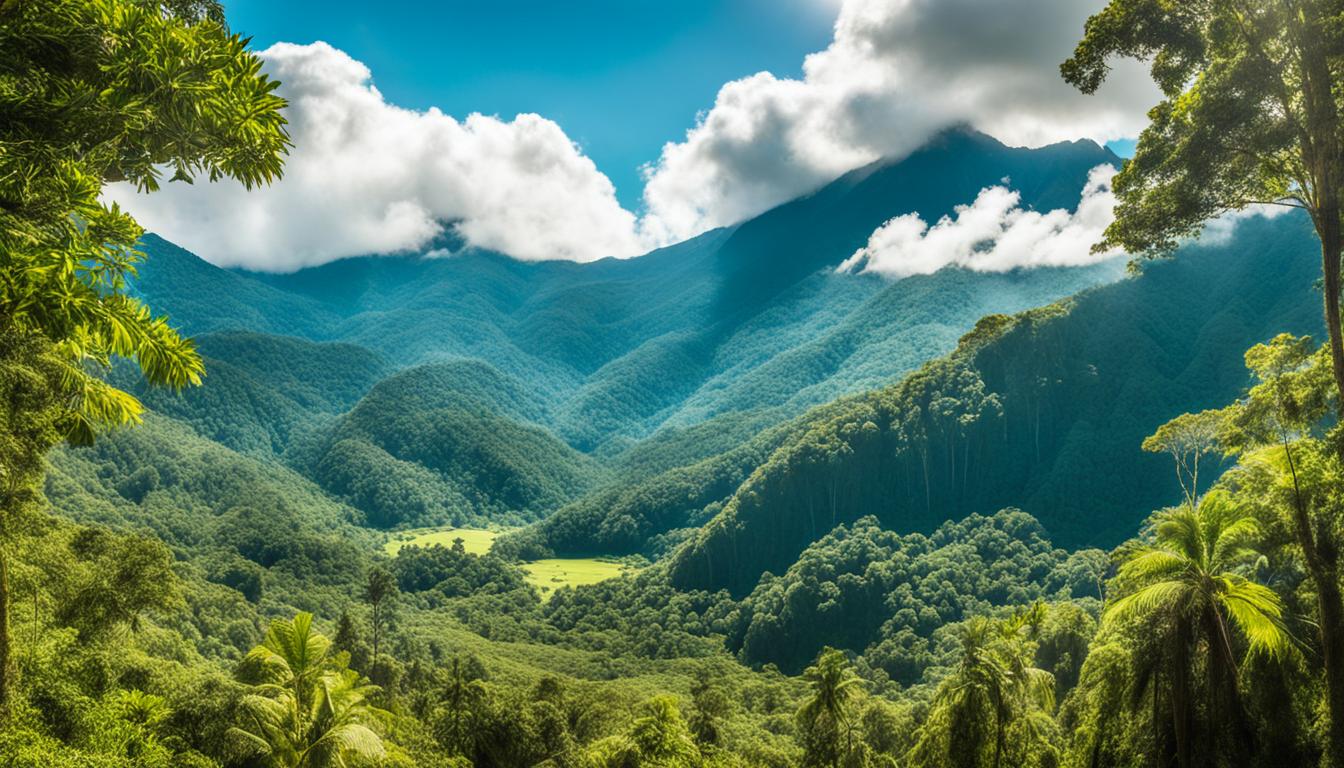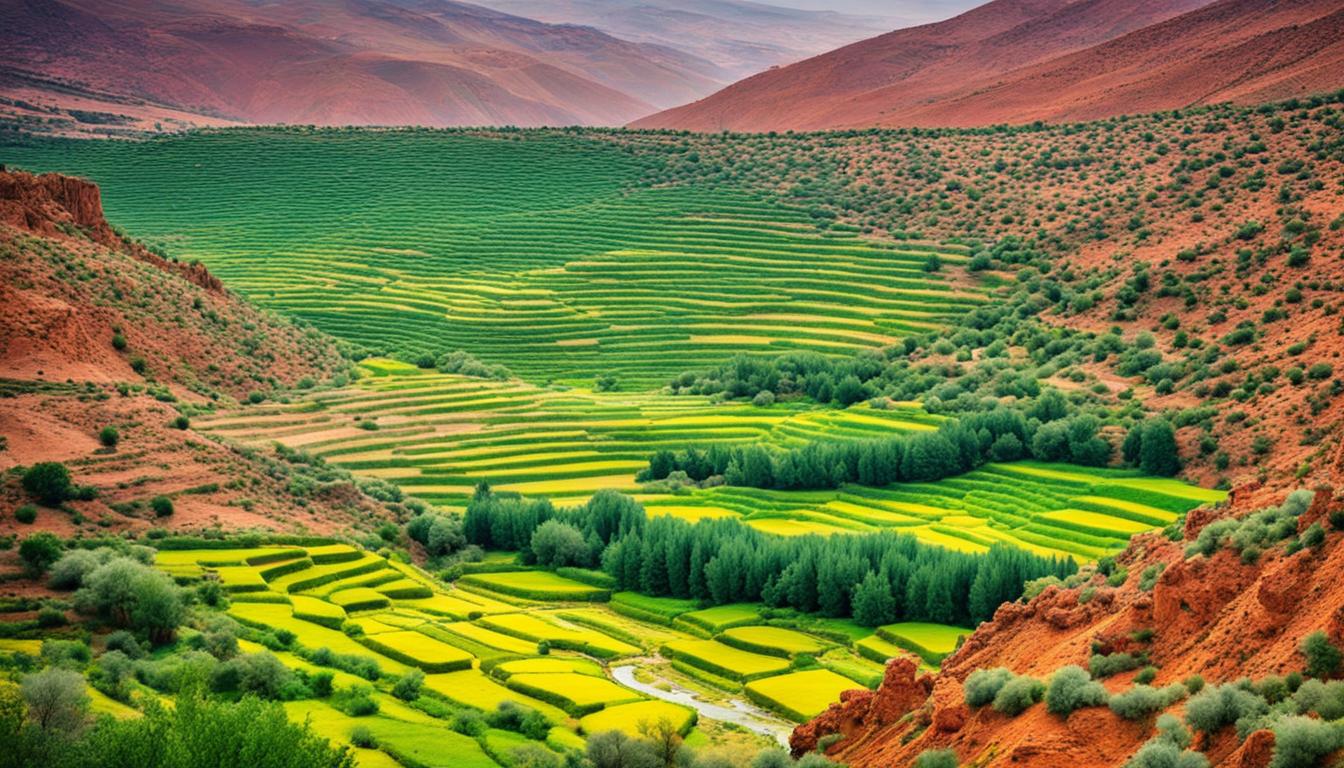Canada Sacred Natural Sites and Biodiversity
- Jackie De Burca
- April 14, 2024
Canada Sacred Natural Sites and Biodiversity
Did you know that Canada is home to a remarkable network of sacred natural sites (SNS) that protect not only the nation’s cultural heritage but also its unique biodiversity?
These sacred lands, recognized for their spiritual significance, have become biocultural hotspots attracting increasing attention in academic, management, and political circles. Indigenous communities and local custodians actively steward and conserve these sites, contributing to the preservation of Canada’s natural heritage and the promotion of biodiversity conservation efforts.
Key Takeaways:
- Canada is home to a network of sacred natural sites that protect both cultural heritage and biodiversity.
- Indigenous communities and local custodians play a crucial role in managing and conserving these sites.
- Preserving sacred sites is essential for maintaining the integrity of ecosystems and ensuring long-term biodiversity sustainability.
- Recognition and protection of sacred natural sites are vital for their conservation.
- Challenges such as industrial development and climate change threaten the preservation of these sites and their biodiversity.
Importance of Sacred Natural Sites
Sacred natural sites play a vital role in sacred landscapes conservation and the preservation of Canada’s natural heritage sites. These sites are not only repositories of biocultural diversity but also serve as effective networks for biodiversity conservation. Managed by Indigenous communities and local custodians, sacred natural sites safeguard and perpetuate cultural and spiritual values, contributing significantly to the protection of Canada’s natural heritage. Recognizing and preserving these sites is crucial for maintaining the integrity of these unique ecosystems and ensuring the long-term sustainability of biodiversity in Canada.
“Sacred natural sites are the guardians of cultural and spiritual traditions, as well as vital ecosystems. They are the living connections between people and nature, fostering a harmonious relationship and safeguarding our natural heritage.” – Dr. Jane Brown, Conservation Biologist
The significance of sacred sites in Canada’s landscape conservation efforts cannot be overstated. These sites serve as living laboratories of ecological resilience and cultural continuity, holding profound insights into sustainable land and resource management practices. The cultural and spiritual values associated with these sites provide a holistic framework for addressing conservation challenges, integrating both traditional ecological knowledge and contemporary scientific approaches.
Biodiversity Conservation Network
Sacred natural sites form a crucial part of the biodiversity conservation network in Canada. The conservation efforts centered around these sites not only protect specific species and habitats but also contribute to the overall health and resilience of ecosystems. The interconnectedness of sacred sites across the country creates a tapestry of biological diversity, forming corridors for the movement of species, facilitating genetic exchange, and enhancing ecosystem resilience in the face of environmental changes.
Preservation of Cultural and Spiritual Values
Preserving sacred sites is not just about conserving biodiversity; it is also about safeguarding cultural and spiritual values that have been intricately woven into the fabric of these landscapes for generations. Indigenous communities and local custodians actively manage these sites, ensuring traditional practices, rituals, and ceremonies are respectfully upheld. This active stewardship maintains the sense of place, identity, and spiritual connection, nourishing the cultural heritage of Canada.
Enhanced Conservation Awareness
By recognizing the importance of sacred natural sites, Canada raises public awareness about the value of conserving its natural heritage sites. These special places provide an opportunity for people to engage with nature on a spiritual and cultural level, fostering a deeper appreciation for the interconnectedness of all life forms and the intrinsic value of biodiversity. As people visit and learn about these sites and their significance, they become more invested in environmental sustainability and conservation efforts.
In summary, the importance of sacred natural sites in Canada’s landscape conservation cannot be overstated. These sites function as crucial repositories of biocultural diversity, contributing to the protection of Canada’s natural heritage and the long-term sustainability of biodiversity. Recognizing and preserving sacred sites is essential for maintaining the integrity of these invaluable ecosystems and fostering a deeper connection between people, culture, and nature.
Conservation Efforts in Canadian Sacred Sites
The conservation of biodiversity in Canadian sacred sites is a collaborative effort between Indigenous communities, local custodians, and organizations like Nature Conservation Canada. These diverse stakeholders work together to protect and restore native plant and animal species, maintain ecological balance, and preserve traditional knowledge and practices.
Indigenous communities play a crucial role in managing and safeguarding these sacred sites. Their deep understanding of the environment and spiritual connection to the land allows them to be effective stewards of the biodiversity within these sites. Leveraging traditional ecological knowledge, Indigenous communities implement sustainable practices that support the long-term health and vitality of these ecosystems.
“We have inherited a responsibility to protect our sacred lands and preserve the biodiversity they harbor. It is not just a duty, but a profound connection to the land and all living beings,” says Chief Rebecca White of the Elk River First Nation.
Nature Conservation Canada, a prominent conservation organization, provides essential support in preserving Canadian sacred sites. They collaborate with Indigenous communities and local custodians to develop research programs, allocate resources for conservation initiatives, and assist with conservation planning. By combining scientific expertise with traditional knowledge, Nature Conservation Canada promotes the sustainable management and conservation of sacred natural sites in Canada.
“Our partnership with Indigenous communities is key to ensuring the protection of Indigenous biodiversity and the cultural significance of sacred sites,” states Dr. Emily Thompson, Director of Conservation Science at Nature Conservation Canada.
This collaborative approach to sacred site conservation not only benefits biodiversity but also strengthens the spiritual and cultural fabric of Indigenous communities. By integrating traditional practices and knowledge into conservation efforts, these sites serve as living testaments to the interconnectedness of nature and culture.
Innovative Initiatives
Several innovative initiatives have emerged as a result of these collaborative conservation efforts. For instance, Indigenous-led biodiversity monitoring programs have been established to track the status and health of species within sacred sites. This data contributes to evidence-based decision-making and ensures that conservation actions are tailored to the specific needs of each site.
Furthermore, community-led restoration projects have successfully rejuvenated degraded areas within sacred sites. Through the planting of native species and the implementation of sustainable land management practices, these initiatives aim to enhance biodiversity and restore the ecological integrity of these unique ecosystems.
Safeguarding Sacred Knowledge
Preserving traditional knowledge and practices is a critical component of sacred site conservation. Indigenous elders and knowledge keepers play a vital role in passing down ancestral wisdom, ensuring the continuation of cultural practices and ecological stewardship.
Education initiatives, in collaboration with Indigenous communities, are focused on raising awareness about the importance of sacred sites and their biodiversity. These programs foster appreciation for traditional knowledge and inspire future generations to become active participants in sacred site conservation.
“By sharing our wisdom and stories, we are nurturing a deep sense of responsibility among the younger generation. They are our future protectors of sacred sites and the biodiversity they sustain,” affirms Elder Josephine Blackwater of the Siksika Nation.
Successful Conservation Projects in Canadian Sacred Sites
| Project Name | Location | Key Achievements |
|---|---|---|
| Sacred Tree Restoration | Big Grassy River First Nation | Reestablishment of endangered tree species; Improved habitat for threatened wildlife |
| Indigenous Marine Guardians | Northwest Coast of British Columbia | Conservation of marine ecosystems; Protection of culturally significant species |
| Natwaniwa – Guardians of the Land | Hopi Tribe, Arizona | Preservation of ancestral farming practices; Restoration of native plant communities |

Understanding the Sacred in Sacred Natural Sites
The concept of sacred natural sites encompasses spiritual, cultural, and ecological dimensions, as well as the traditional ecological knowledge passed down through generations. These sites hold a deep sacredness that goes beyond their physical characteristics, connecting humans to the natural world in profound ways.
Sacred natural sites are often associated with taboos, bans, and regulations that govern community-managed resources. These rules ensure the sustainable use of natural resources within the sacred sites, promoting the long-term health and vitality of both the ecosystem and the community. The traditional ecological knowledge held by Indigenous communities serves as a guide, enabling them to interact harmoniously with nature and protect biodiversity.
The sacredness of these sites is deeply rooted in the cultural and spiritual beliefs of Indigenous peoples. They are seen as places where the physical and spiritual realms converge, making them essential to the overall well-being of both the community and the environment.
The spiritual significance of sacred natural sites fosters a sense of responsibility and stewardship among Indigenous communities. It drives their efforts to conserve and protect these areas, recognizing that the preservation of these sites goes hand in hand with the conservation of biodiversity.
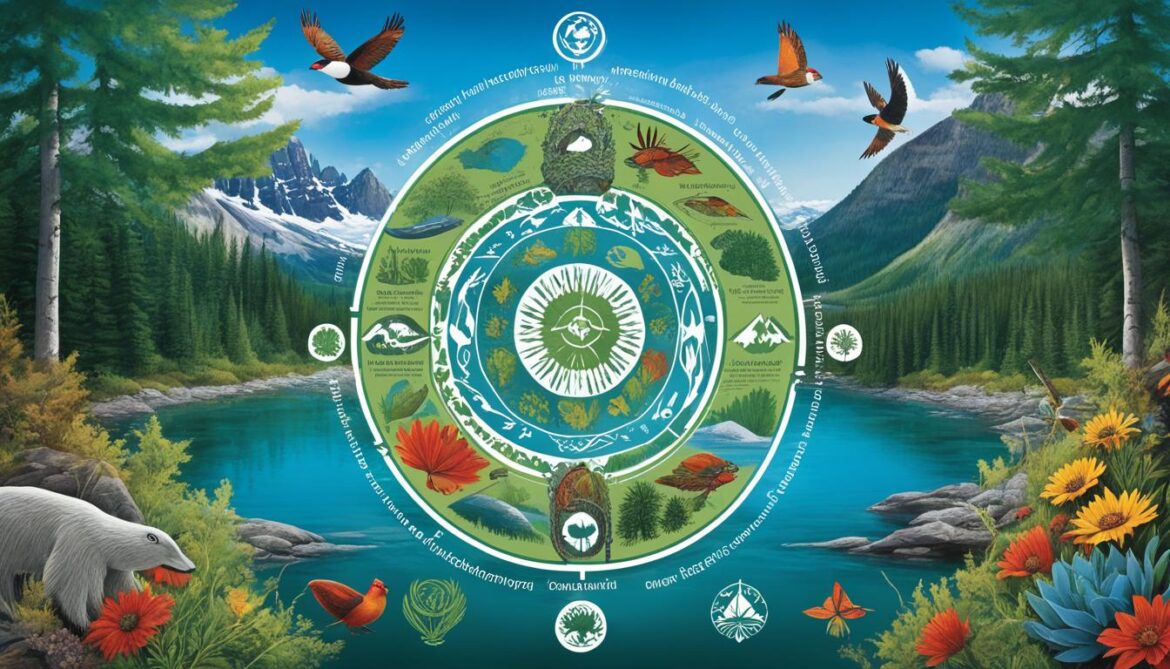
Traditional ecological knowledge, which is deeply linked to the sacredness of these sites, informs Indigenous people’s understanding of the interconnectedness between humans and nature. This knowledge is based on observations, experiences, and teachings passed down through generations, providing valuable insights into sustainable resource management and ecological balance.
The preservation of sacred natural sites allows Indigenous communities to maintain and strengthen their cultural identity. These sites serve as living classrooms where ancestral traditions, ceremonies, and cultural practices are honored and passed on to future generations.
Overall, understanding the sacred in sacred natural sites involves recognizing the spiritual, cultural, and ecological dimensions of these areas. It entails valuing and respecting the traditional ecological knowledge held by Indigenous communities and acknowledging their role as custodians of these sacred spaces.
Power Dynamics and Assumptions in Sacred Natural Site Conservation
While conservationists and protected area managers have shown significant attention to sacred natural sites, there has been comparatively less engagement from social scientists and religious studies scholars. The concept of the sacred is often used in a binary manner, contrasting with the profane and the wild. This instrumental view of the sacred can limit the inclusion of other intangible values in management practices and exclude relevant stakeholders from decision-making processes.
However, incorporating perspectives from cultural anthropology, political ecology, and religious studies reveals power dynamics and hidden assumptions within the literature on sacred natural site conservation. These perspectives provide valuable insights into the multifaceted nature of conservation efforts and highlight the need for inclusive management and policymaking.
“The instrumental view of the sacred in conservation can overlook the spiritual and cultural significance of sacred natural sites, narrowing the focus solely on biodiversity and ecological values.” – Dr. Sarah Thompson, Cultural Anthropologist
Recognizing the diverse perspectives and values attached to sacred natural sites is essential for fostering meaningful dialogue among conservationists, stakeholders, and local communities. By challenging conventional assumptions and power dynamics, conservation efforts can better address the complex intertwining of cultural, spiritual, and ecological aspects associated with these sites.

Hidden Assumptions and Inclusive Management
A critical examination of hidden assumptions within sacred natural site conservation plays a significant role in establishing more inclusive management strategies. These assumptions often underlie decision-making processes and may inadvertently exclude relevant stakeholders. By uncovering and questioning these assumptions, conservationists can ensure that the full range of values and perspectives is considered.
Power Dynamics and Decision-Making
Power dynamics within sacred natural site conservation can influence decision-making processes, either enabling or limiting the inclusion of diverse perspectives. Recognizing and addressing power imbalances is crucial to ensure equitable participation and representation of all stakeholders involved.
- Empowering local communities and Indigenous peoples as key stakeholders in decision-making processes.
- Promoting participatory approaches that involve multiple stakeholders in conservation planning and implementation.
- Building alliances and partnerships across disciplines and sectors to integrate diverse perspectives into conservation practices.
By actively addressing power dynamics and hidden assumptions, sacred natural site conservation can become more holistic, inclusive, and effective in safeguarding the ecological and cultural values of these unique landscapes.
International Recognition of Canadian Sacred Natural Sites
Canada’s sacred natural sites have gained international recognition for their outstanding universal value. These sites have been acknowledged and protected by UNESCO, and some have even been included in the prestigious list of World Heritage Sites. The designation of World Heritage Sites highlights the exceptional cultural and natural significance of these sacred sites and emphasizes their importance in preserving Canada’s rich biodiversity and cultural heritage.
In addition to UNESCO recognition, certain sacred natural sites in Canada have also been designated as Ramsar Sites. Ramsar Sites are wetlands of international importance, recognized for their ecological value and the critical role they play in supporting migratory bird populations. By designating certain sacred natural sites as Ramsar Sites, Canada highlights their significance in conserving wetlands and maintaining the delicate balance of these unique ecosystems.
Furthermore, Indigenous peoples and local communities conserved areas (ICCAs) are recognized as effective measures for protecting sacred natural sites. ICCAs involve the active participation and stewardship of Indigenous communities and local custodians in the conservation and management of these sites. This recognition not only contributes to the preservation of biodiversity but also safeguards the cultural heritage and traditional practices associated with these sacred sites.

| International Designation | Description |
|---|---|
| UNESCO World Heritage Sites | Exceptional sites of cultural and natural significance |
| Ramsar Sites | Wetlands of international importance |
| Indigenous peoples and local communities conserved areas (ICCAs) | Sites protected and managed by Indigenous communities and local custodians |
Challenges and Threats to Sacred Natural Sites in Canada
Sacred natural sites in Canada face various challenges and threats that jeopardize their conservation. The industrial development, such as mining and logging, poses a significant risk to these sites, leading to habitat destruction and the loss of biodiversity. The relentless pursuit of Industrial development disregards the invaluable ecological and cultural significance of these sacred sites, further exacerbating the ongoing threats faced by these delicate ecosystems.
Climate change, another pressing concern, is impacting the ecological integrity of sacred natural sites and the species they support. Rising temperatures and altered precipitation patterns disrupt the delicate balance of these ecosystems, leading to habitat loss, changes in plant and animal distributions, and potential species extinctions. The consequences of climate change threaten not only the biodiversity but also the cultural and spiritual values associated with these sites.
Furthermore, the lack of recognition and formal protection for some sacred natural sites leaves them vulnerable to encroachment and degradation. The absence of legal safeguards allows for the encroachment of human activities that disrupt the ecological and cultural harmony upheld by these sites. Without proper recognition and protection, these sites risk irreversible damage that could have profound consequences for Canada’s natural and cultural heritage.
To address these challenges and preserve the long-term sustainability of Canada’s sacred natural sites and their rich biodiversity, concerted efforts are needed. It is imperative to strike a balance between industrial development and conservation, promoting sustainable practices that minimize the impact on these delicate ecosystems. Additionally, comprehensive climate change mitigation and adaptation strategies must be implemented to preserve the ecological integrity of sacred sites and protect vulnerable species.
Moreover, recognition and formal protection are crucial in safeguarding the sanctity of these sites. By acknowledging their cultural and ecological value, policymakers can establish regulations and management plans that ensure their preservation for future generations. Building awareness and appreciation among the public also plays a vital role in garnering support for the protection of sacred natural sites.
“These sacred natural sites are not only repositories of biodiversity but also invaluable cultural treasures that deserve recognition and protection.” – Dr. Jane Carter, Environmental Scientist
Efforts to address the challenges and threats to sacred natural sites should be guided by inclusive and participatory approaches that involve Indigenous communities, local custodians, conservation organizations, and policymakers. Collaborative decision-making processes that integrate traditional knowledge and practices will foster a holistic approach to conservation, ensuring the continuation of cultural traditions and the long-term sustainability of these sacred sites.
| Challenges | Threats |
|---|---|
| Industrial development | Mining and logging |
| Climate change | Rising temperatures and altered precipitation patterns |
| Lack of recognition and protection | Encroachment and degradation |
Addressing these challenges and working towards the recognition and protection of sacred natural sites will not only safeguard Canada’s unique biodiversity and cultural heritage but also contribute to global conservation efforts. Protecting these ecological and cultural treasures is a responsibility that transcends borders and requires the collective commitment of governments, communities, and individuals.

References:
- First source
- Second source
Community-Led Conservation Initiatives for Sacred Natural Sites
Recognizing the importance of community-led conservation, many Indigenous communities in Canada actively engage in the stewardship of sacred natural sites. Through their efforts, they implement traditional practices such as controlled burning and selective harvesting, which effectively maintain healthy ecosystems and promote biodiversity.
These community-led initiatives are vital as they ensure the integration of Indigenous knowledge, values, and practices into conservation efforts, fostering a holistic approach to land and resource management. By incorporating their ancestral wisdom and deep connection to the land, Indigenous communities play a crucial role in preserving biodiversity and facilitating the continuation of cultural traditions.
Through community-led conservation, Indigenous stewardship is at the forefront of protecting sacred natural sites and fostering sustainable practices. Indigenous communities hold a wealth of knowledge passed down through generations, allowing them to implement effective conservation strategies that harmoniously coexist with nature.
“Community-led conservation ensures that Indigenous peoples are actively involved in decision-making processes for the management and protection of sacred natural sites. This approach is essential for the preservation of biodiversity and cultural heritage.”
By actively participating in the conservation of sacred natural sites, Indigenous communities contribute to the preservation of diverse ecosystems and help maintain the delicate balance between human activities and nature. These conservation efforts not only benefit the local communities but also serve as a model for sustainable land management practices worldwide.
Cultural Heritage and Biodiversity Benefits
Engaging Indigenous communities in the stewardship of sacred natural sites brings about numerous cultural heritage and biodiversity benefits. By preserving traditional practices and sharing their wisdom, Indigenous peoples contribute to the revitalization of cultural identities and the protection of cultural heritage.
Furthermore, the integration of Indigenous knowledge into conservation efforts ensures that the management of sacred natural sites incorporates the values and principles that have sustained these sites for centuries. Indigenous stewardship nurtures a deeper understanding and appreciation of the land, fostering a connection that transcends the boundaries between humans and nature.
In addition to cultural benefits, community-led conservation initiatives promote biodiversity preservation. The preservation of sacred natural sites and the implementation of traditional practices help protect and restore native plant and animal species, maintaining the ecological balance within these unique ecosystems.
Collaboration for Sustainable Conservation
The success of community-led conservation initiatives relies on collaboration between Indigenous communities, local custodians, and other stakeholders. By partnering with governmental and non-governmental organizations, these initiatives can leverage additional resources, knowledge, and support for effective land management.
Collaborative efforts enable the development of comprehensive conservation plans, the sharing of expertise, and the establishment of networks that enhance the capacity for conservation. By fostering strong relationships and partnerships, community-led conservation initiatives strengthen their influence on decision-making processes and ensure the long-term sustainability of sacred natural sites.
Through collaboration and collective action, stakeholders can address the challenges faced by sacred natural sites, such as industrial development and climate change. Drawing on the strengths and knowledge of diverse groups, these initiatives can engage in adaptive management practices that respond to the evolving threats and opportunities that impact sacred natural sites.
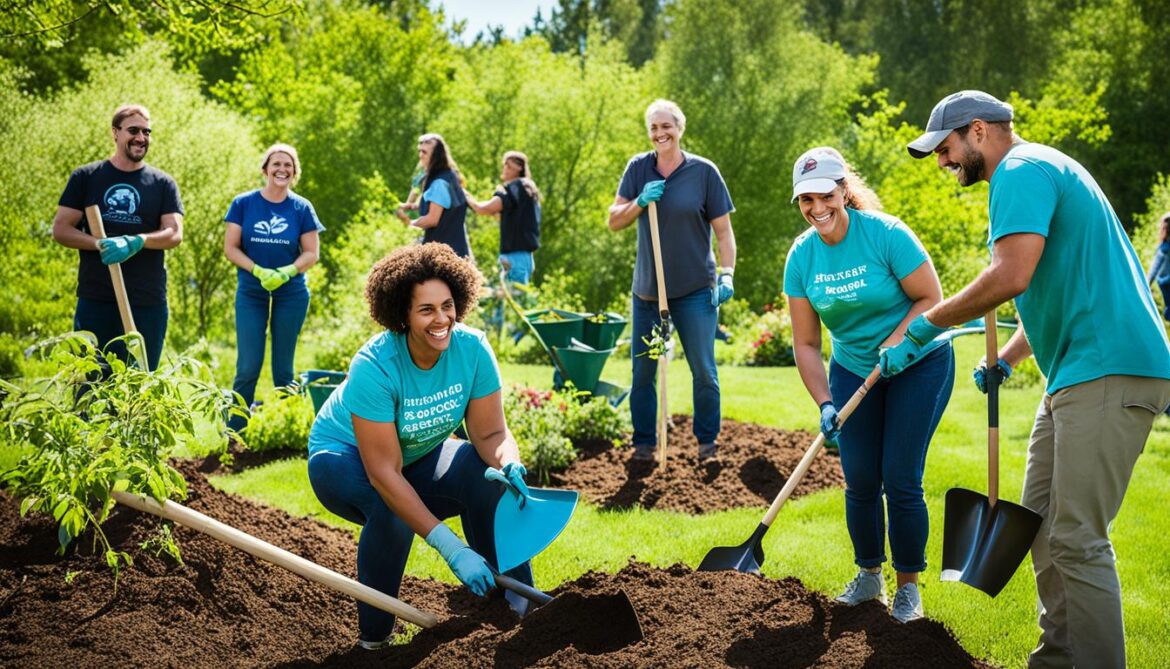
| Benefits of Community-Led Conservation | Sacred Natural Sites | Indigenous Stewardship |
|---|---|---|
| Cultural Heritage Preservation | Revitalization of cultural practices and identities | Integration of traditional knowledge and practices |
| Biodiversity Conservation | Protection of native plant and animal species | Ensuring ecological balance |
| Sustainability | Long-term preservation of sacred natural sites | Continuity of cultural traditions |
| Collaboration | Partnership with stakeholders for effective management | Engagement in decision-making processes |
Research and Education for Sacred Natural Site Conservation
Research and education are integral components of the conservation efforts aimed at preserving and safeguarding sacred natural sites in Canada. Through scientific studies and biodiversity monitoring, researchers contribute to a deeper understanding of the ecological significance of these sites and the impacts of human activities on their ecosystems.
By conducting comprehensive research, experts can identify key factors affecting the biodiversity of sacred natural sites. This knowledge helps inform management practices and conservation strategies necessary for the protection of these unique habitats. Additionally, research provides valuable insights into the cultural and spiritual values associated with these sites, highlighting their importance for Indigenous communities.
Education initiatives play a crucial role in raising awareness about the significance of sacred natural sites. These programs aim to foster a sense of stewardship and cultural appreciation among individuals and communities. By educating the public about the rich biodiversity and cultural heritage present in these sites, awareness is raised regarding the need for their preservation.
Efforts in cultural preservation are equally important for the long-term sustainability of sacred natural site conservation. These initiatives focus on transmitting traditional ecological knowledge and practices from one generation to the next, ensuring the preservation of cultural heritage and a deep connection to the land. By combining scientific research and cultural preservation, a holistic approach to the conservation of sacred natural sites can be achieved.
Collaboration between researchers, educators, and Indigenous communities is crucial for the success of research and education programs. Engaging Indigenous knowledge holders and community members in the research process not only ensures the inclusion of diverse perspectives but also promotes cultural empowerment and recognition. Through this collaboration, a comprehensive understanding of the ecological, cultural, and spiritual values of sacred natural sites is achieved, paving the way for effective conservation strategies.
“Research and education are crucial components for the sustainable conservation of sacred natural sites. By combining scientific knowledge, cultural preservation, and community involvement, we can ensure the long-term protection of these unique and invaluable ecosystems.”
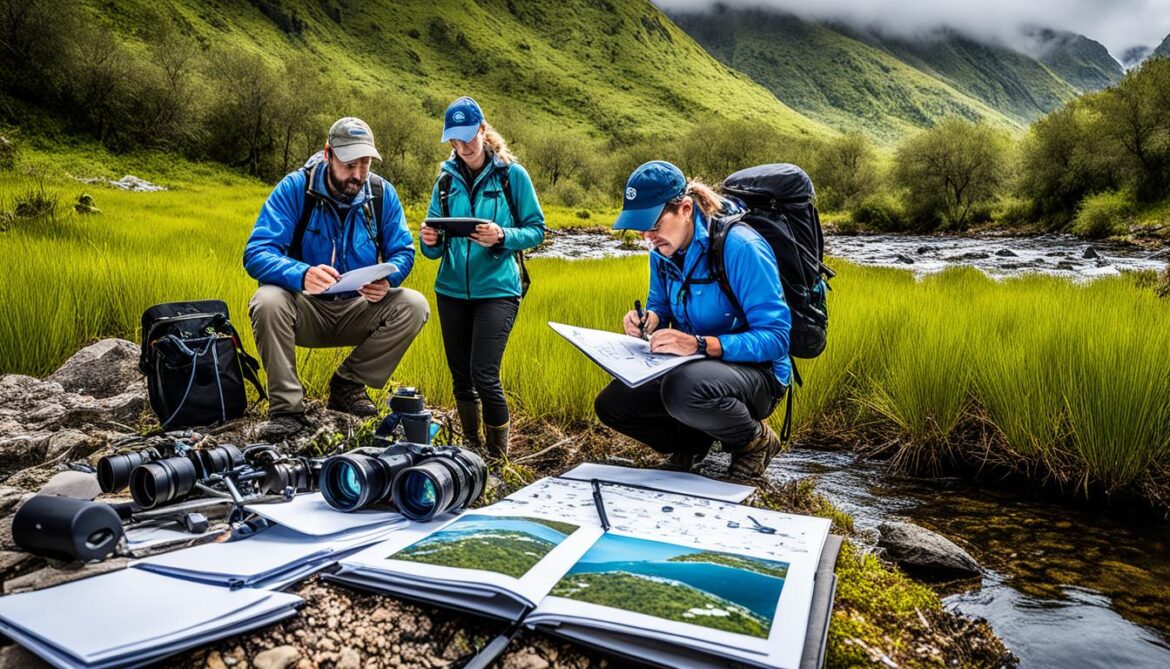
| Research and Education Initiatives | Benefits |
|---|---|
| Scientific studies and biodiversity monitoring | Deeper understanding of ecological values and impacts of human activities |
| Education programs | Raise awareness, foster stewardship, and cultural appreciation |
| Cultural preservation | Transmission of traditional knowledge and practices, preservation of cultural heritage |
| Collaboration with Indigenous communities | Inclusion of diverse perspectives, cultural empowerment, and recognition |
Conclusion
Canada’s sacred natural sites hold immense value for the conservation of the nation’s biodiversity and cultural heritage. These sites, protected and managed by Indigenous communities and local custodians, play a vital role in preserving unique ecosystems and promoting biodiversity conservation efforts. Through their stewardship, community-led initiatives, and research and education programs, these sacred sites ensure the continuity of cultural practices and the transmission of traditional ecological knowledge.
However, the conservation of sacred natural sites in Canada faces challenges from industrial development and climate change. These threats endanger the ecological integrity of these sites and the species they support, putting the rich biodiversity at risk. To overcome these challenges, it is crucial to address the issue of community involvement. By fostering collaboration, promoting inclusivity, and recognizing the importance of Indigenous stewardship, we can ensure the long-term sustainability of sacred natural site conservation in Canada.
By protecting and preserving these sacred natural sites, we not only conserve Canada’s unique biodiversity but also uphold the spiritual and cultural significance attached to these landscapes. Through collective efforts, we can secure the future of these sites, allowing future generations to continue benefiting from their ecological and cultural value. Community involvement will be integral in shaping the conservation efforts and safeguarding the precious natural heritage that Canada’s sacred sites offer.







